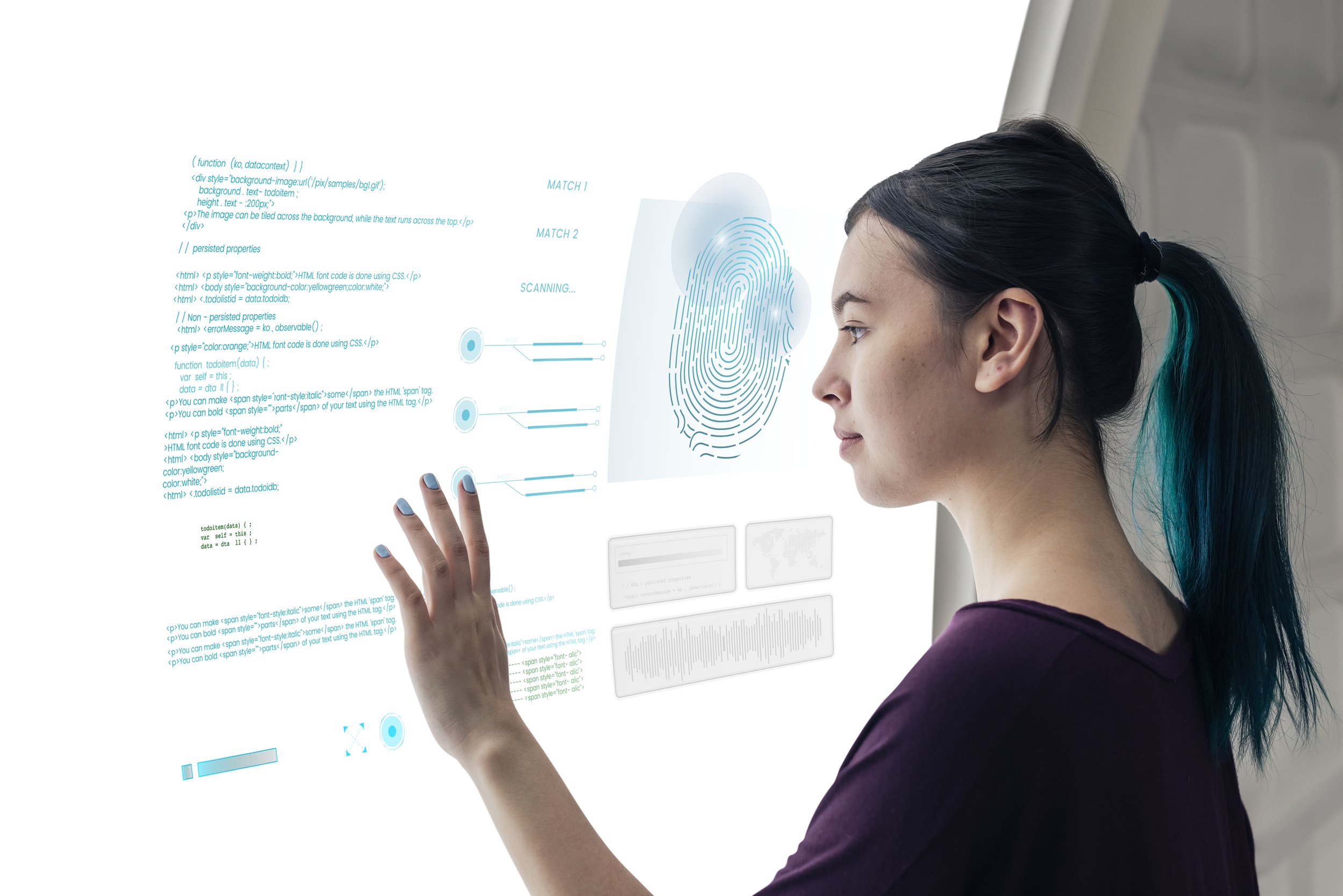How Is Augmented Intelligence Different from Artificial Intelligence?
Artificial intelligence (A.I.) is a controversial topic. Some see it as a blessing that could eradicate disease and poverty, while others see it as a threat to humanity. Within the A.I. realm, two terms have emerged: Artificial Intelligence and Augmented Intelligence.
The terms used interchangeably have led to confusion about their distinct meanings. Keep reading to discover the fundamental differences between artificial and augmented intelligence and how A.I. is reshaping the business world.
Artificial Intelligence in a Nutshell
Netflix is an example of A.I. When you log in, the system analyzes:
Your browsing history
It's content library
The Netflix A.I. algorithm then gives tailored suggestions based on your preferences.
Artificial intelligence is a self-learning technology meant to mimic human intelligence with machines. Machine learning enables A.I. systems to learn from data and improve their performance over time.
Businesses use A.I. to:
Automate processes
Analyze data
Function independently
If the idea of robots acting independently scares you, don't worry – true autonomous A.I. doesn't exist (yet).
Returning to our Netflix example, the A.I. algorithm suggests titles for you. Yet you, the human, use this newfound insight to decide what to watch.
What Are the Benefits of Artificial Intelligence?
Functions Autonomously
A.I. systems operate independently by following predefined rules or machine learning to analyze information and act. Think of automated answering services – they use voice recognition to understand your needs and route your call to the correct department.
This autonomy helps businesses to:
Streamline workflows
Reduce manual effort
Increase efficiency
Identifies Patterns in Large Amounts of Data
Analyzing large datasets is time and resource intensive for human researchers. A.I. quickly analyzes sets of data to:
Discover trends and hidden insights
Make sense of the data in summaries
A manufacturer, for instance, could use this data to monitor equipment and predict maintenance needs. A.I. can analyze previous maintenance needs based on time and production volume. The company, in turn, can plan for scheduled maintenance without affecting production schedules.
Improved Accuracy
Unlike humans, machines don’t experience fatigue, become distracted, or experience ‘off days’ that affect accuracy and outcomes. A.I. helps avoid these issues by automating repetitive and manual tasks.
By automating processes such as data entry, document processing, and quality control, businesses can:
Minimize human error
Improve data accuracy
Operate consistently
A.I. systems can monitor data and operational metrics in real-time. For instance, the manufacturing facility could set up equipment monitors that alert workers of irregularities in production.
Augmented Vs. Artificial Intelligence: What is the Difference?
A.I. is already in many consumer products (such as Netflix), but the application of A.I. in business settings is only just starting to gain traction. That is where the term Augmented comes into play.
Instead of replacing humans, augmented intelligence works with humans as a tool to assist with everyday business processes, such as:
Task completion
Creativity
Problem-solving
Augmented intelligence analyzes data and puts it into a digestible format for human action. The technology emphasizes the importance of human judgment, creativity, and critical thinking in decision-making.
What Are the Benefits of Augmented Intelligence?
Augmented intelligence sets the stage for a range of benefits that ultimately empower human action and decision-making, such as:
Increased Customer Satisfaction
There are many ways businesses use augmented intelligence to boost customer satisfaction. Common examples include:
Reviewing past purchases and suggesting items by preferences or shopping behavior
Using chatbots to answer common queries and resolve issues
Summarizing customer feedback data to identify areas for improvement
Using analytics to predict future trends or detecting potential problems to meet customer expectations
Enhanced Decision Making
A.I. generated insights are based on data and can help businesses can gain a fuller understanding of their situation to:
Forecast future profit
Reduce market uncertainty
Supplement decision making
Better Planning and Efficiency
A.I. analytics are data-driven to provide a deeper understanding of:
Business operations
Customer behaviors
Market trends
The competitive landscape
These insights can enhance forecasting and demand planning for teams. Using our manufacturing example, a plant can use these analytics to:
Optimize inventory levels
Track production capacity
Monitor logistics schedules
Identify production bottlenecks
What Are the Limitations of Augmented Intelligence?
Dependence on Data Quality
Augmented intelligence relies on quality data to function. Incorrect, biased, or incomplete data can lead to misleading insights and recommendations.
Lack of Contextual Understanding
Unlike humans, A.I. cannot understand nuances, cultural references, or subtle cues evident to people. The majority of today's A.I. tools lack contextual understanding, which can lead to errors or incorrect outputs.
Some tools (such as StormAI) are built to understand the context of your work and any changes you make.
Try the Only Context-Aware A.I. Digital Workspace on the Market
As you work and make changes, StormAI adapts to inform your decision-making, and enhance your creativity.
Demo StormAI Today!
Ethical and Privacy Concerns
A.I. raises ethical concerns around:
Privacy
Data security
Misuse of personal information
Over-reliance on A.I. Technology
There is a fear that users will become over-reliant on A.I. to the detriment of skills such as writing, creativity, and critical thinking.
Lack of Emotional and Social Intelligence
A.I. lacks emotional intelligence and the ability to respond to human emotion. This limitation hinders the ability to handle social interactions that require empathy or understanding complex emotions.
Real-World Examples of Industries Using Augmented Intelligence
Healthcare
Healthcare facilities manage and store large amounts of patient data. Unsurprisingly, the industry quickly adopted A.I. to improve patient care.
Today, the pharmaceutical industry leverages A.I. to aid in drug development. A.I.’s ability to assess greater volumes of data allows drug researchers to identify relationships in cellular data and identify possible treatments for disease.
A.I. technology also helps facilities provide personalized healthcare by analyzing a patient's genetic, environmental, and lifestyle data to predict disease risks and determine treatment plans.
Finance
Another industry using A.I. is finance, due to the industry's need to understand vast amounts of data.
With augmented intelligence, financial planners can offer tailored solutions to customers by quickly analyzing factors such as customer:
Saving preferences
Earning expectations
Risk tolerance levels
Southeast Toyota Finance uses A.I. to approve car loans. Toyota’s A.I. systems can assess individual lending risks based on factors such as credit score and ability to repay. A Toyota representative can then review the case and issue or deny the request.
Customer Service
Airline Ryanair uses A.I. to view customer buying preferences and offer deals based on user travel preferences. For example, Ryanair's technology can identify a family of four and make a tailored offer, i.e., four airline tickets and a family-friendly hotel with car rental. Offering a personalized package could increase sales and drive a delightful buying experience.
How Augmented Intelligence Is Shifting the Business Landscape
Disrupting the Workforce
A.I. could affect the workforce and even shape the nature of work. With A.I. technology, there is potential to eliminate certain roles and shift job responsibilities. New job opportunities could emerge that require A.I. skill sets.
Automating routine tasks could also increase job satisfaction if employees do not like the tasks eliminated.
Changing Transportation and Mobility
Autonomous cars use a combination of advanced sensors, A.I., and computer systems to perceive the environment, interpret data, and make decisions about driving actions without a human.
Autonomous cars could have the following positive impacts:
A.I. could reduce the number of motor accidents. 94% of traffic accidents result from human error. Autonomous vehicles could make the roadways safer for everyone.
Driving may become accessible for the disabled or visually impaired.
Driving might become more efficient. Real-time data monitoring calculates traffic accidents, congestion, and road conditions to determine the most efficient route.
Transportation could become more environmentally sustainable. Because self-driving vehicles can communicate with one another, they could minimize traffic congestion, and reduce idling time, leading to an overall decrease in energy consumption.
Shaping Ethics
A.I. could make companies more ethical by promoting fairness, transparency, and responsible decision-making. A.I. systems may uncover hidden biases that could make workplace practices fair while helping to rectify discrepancies. By democratizing A.I., businesses can provide equal treatment and reduce discrimination in practices such as:
Hiring
Job promotions
Loan approvals
Customer service
Advancing Technology, Science, and Health
A.I. could accelerate innovation in technology, science, and healthcare by:
Accelerating research: A.I. allows for faster research and can pick up on patterns that human researchers could miss. This analysis can expedite scientific discoveries and drug development and optimize experiments at scale.
Leveraging advanced robotics: By enabling robotic-assisted functions, precision-guided interventions, and automation of repetitive tasks in various settings, organizations can become more efficient and decrease eros. Today, robotics handle processes that require repetitive motions, such as surgery, plant production, and heavy machinery operation.
Artificial Intelligence vs. Augmented Intelligence: The Bottom Line
Artificial intelligence is the idea of systems using data and predefined rules to operate autonomously. While true autonomous technology doesn't exist today, augmented intelligence technology is developing rapidly and changing the world.
Augmented intelligence isn't about replacing humans with machines. Instead, it works with human decision-makers to improve operational efficiency and inform decision-making.
These technological advancements allow businesses to surface data, information, and insight levels that would have traditionally been inaccessible otherwise. While its benefits appear favorable, and many are jumping on the A.I. bandwagon, today's A.I. technology is still within its early stages.
With all this in mind, one can't help but be curious about the future innovation of A.I. technology in health, science, and innovation.
StormAI
Stormboard’s all-new AI system was built on the principles of democratized AI.
If your team is looking at investing in AI, StormAI is an excellent first step that requires virtually no training or prior AI experience or expertise.
It is easy to use for everyone, and most importantly — it augments the talents of your team rather than attempt to replace them, which can make the introduction and adoption of AI exponentially easier.













